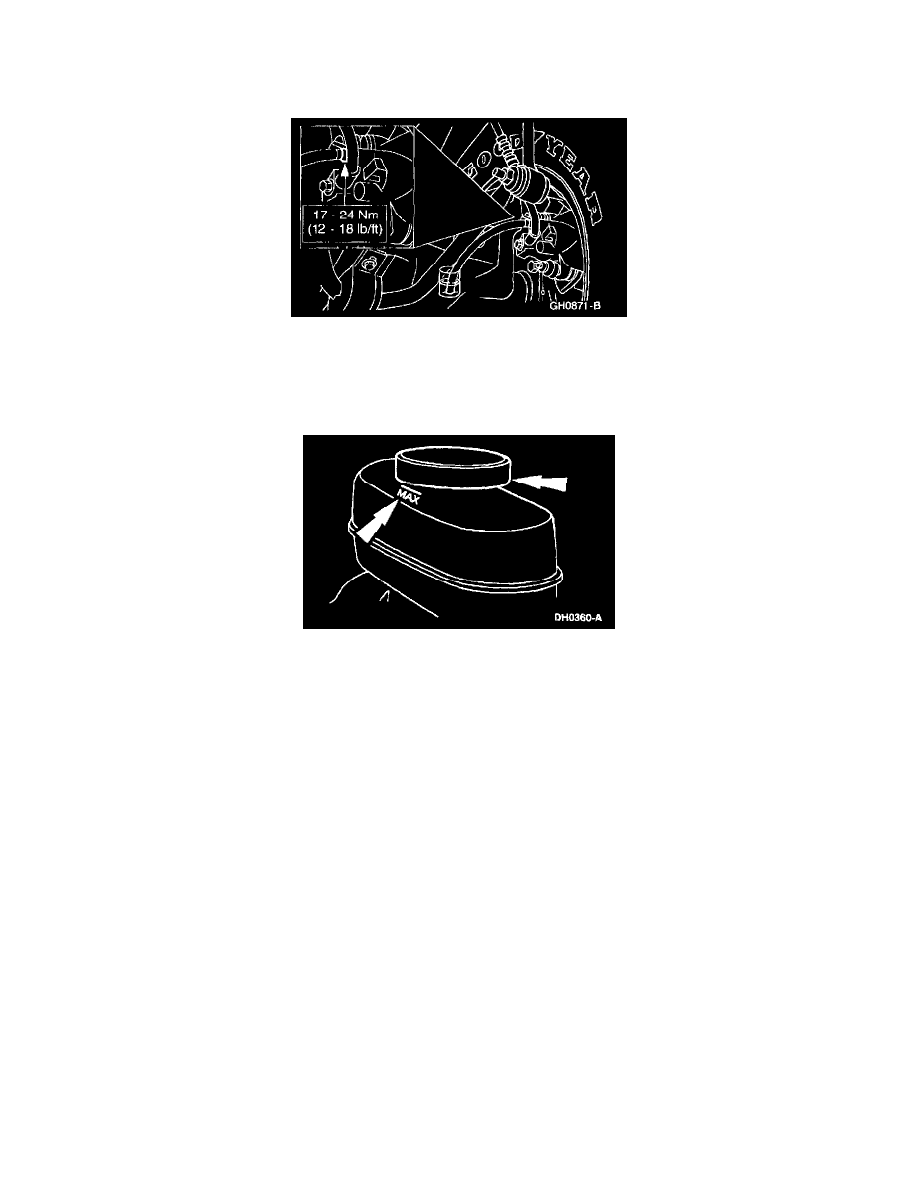Navigator 4WD V8-5.4L DOHC VIN R (2001)

3. Place a box end wrench on the RH rear disc brake caliper bleeder screw. Attach a rubber drain tube to the RH rear disc brake caliper bleeder screw
and submerge the free end of the tube in a container partially filled with clean brake fluid.
4. Open the valve on the bleeder tank.
5. Loosen the rear disc brake caliper bleeder screw. Leave open until clear, bubble-free brake fluid flows, then tighten rear disc brake caliper bleeder
screw and remove the rubber hose.
6. Continue bleeding the rest of the system, going in order from the LH rear disc brake caliper to the RH front disc brake caliper ending with the LH
front disc brake caliper.
7. Close the bleeder tank valve and remove the tank hose from the adapter and remove the adapter.
8. Fill the brake master cylinder reservoir and install the brake master cylinder filler cap.
Four Wheel Antilock Brake System Bleeding
WARNING: Brake fluid contains polyglycol ethers and polyglycols. Avoid contact with eyes. Wash hands thoroughly after handling. If
brake fluid contacts eyes, flush eyes with running water for IS minutes. Get medical attention if irritation persists. If taken internally, drink
water and induce vomiting. Get medical attention immediately.
CAUTION: Do not allow the brake master cylinder reservoir to run dry during the bleeding operation. Keep the brake master cylinder reservoir filled
with the specified brake fluid. Never reuse the brake fluid that has been drained from the hydraulic system.
CAUTION: Brake fluid is harmful to painted and plastic surfaces. If brake fluid is spilled onto a painted or plastic surface, immediately wash it with
water.
NOTE: When any part of the hydraulic system has been disconnected for repair or new installation, air may get into the system and cause spongy
brake pedal action. This requires bleeding of the hydraulic system after it has been correctly connected. The hydraulic system can be bled manually or
with pressure bleeding equipment.
NOTE: This procedure must be performed if the 4 wheel anti-lock brake (4WABS) hydraulic control unit (HCU) has been installed new.
NOTE: One conventional pressure bleed cycle consists of advancing the brake pedal to its depressed position, opening the disc brake caliper bleeder
screw, allowing fluid to be released into the waste container, closing the disc brake caliper bleeder screw and releasing the brake pedal.
NOTE: Performing the NGS program routine drives entrapped air from the otherwise inaccessible lower section of the 4WABS valve into the upper
sections (accessible by bleeding the brakes). Subsequent bleedings remove the air from the system.
NOTE: Add recommended brake fluid as necessary throughout the procedure.
